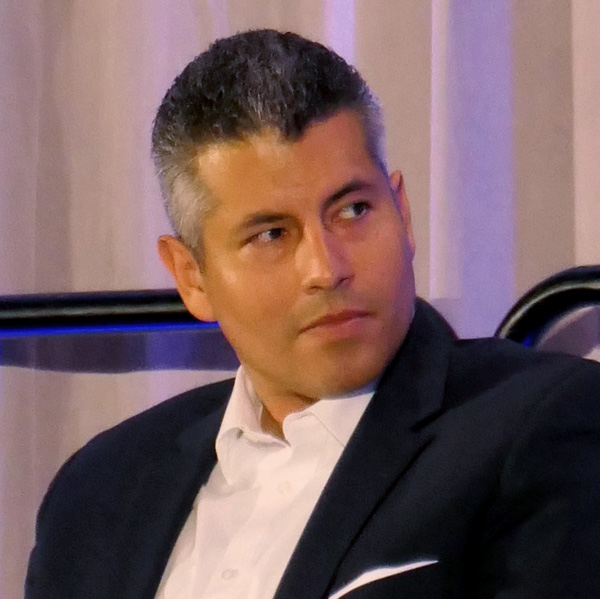Staff Say No Further Changes to ECRS Methodology
ERCOT last week told stakeholders that its staff are not supportive of modifications to the calculation of ERCOT contingency reserve service (ECRS) after recent changes resulted in lower quantities of the product this year.
ERCOT’s Nitika Mago told the Technical Advisory Committee on April 15 that last year’s annually required review of ECRS methodology, reduced 2024 quantities by an average of 442 MW in each hour. That is about a 21% reduction in the service, she said.
“We, as we do every year, will continue to see if there are any improvements that can be made,” Mago said. “We’ll continue to work on the analysis … but at least we’re getting ready for where we want to be.”
ERCOT has drafted a nodal protocol revision request (NPRR1224) creating a trigger allowing staff to manually release ECRS from dispatchable resources earlier than they did last summer. Stakeholders have requested additional analysis on the measure and have tabled it at the Protocol Revision Subcommittee, pushing off any likely decision until midsummer. Staff said that without the guidance on an “appropriately balanced ECRS deployment trigger,” they will release the product in a similar manner to last year.
“I think we do see this as a good step forward,” Jeff Billo, ERCOT’s director of operations planning, said of the NPRR. “We see other steps being necessary, but we see this as a good initial step forward.”
ECRS was deployed last June as ERCOT’s first new ancillary service in 20 years. The grid operator’s Independent Market Monitor said in December that ECRS has created artificial supply shortages producing “massive” inefficient market costs, totaling about $12.5 billion last year through November.
Staff promised last year to re-evaluate ECRS and share the results with stakeholders by April 30. They said a holistic review of the entire ancillary service methodology could soon be necessary. That same review would better address some of the IMM’s concerns, Mago said. (See ERCOT Board of Directors Briefs: Dec. 19, 2023.)
Mark Dreyfus, representing a coalition of Texas cities, urged for a deeper review of the IMM’s $12.5 billion figure to determine whether ERCOT induced congestion by holding excess reserves out of the energy market.
“I’ve asked, and I think others asked way back when this issue first started: Let’s all drill down; this is so important,” Dreyfus said, noting the wholesale market’s “potentially unnecessary expense.”
“Let’s drill down and find out if that really happened or what were the circumstances. I don’t think we did that drill-down, and this conversation has suffered from that,” he said.
ERCOT has disputed the IMM’s analysis, calling the numbers “unknowable.” Billo said the long-term cost is really the cost of capacity being set aside.
“We all understand that $12.5 billion is not a real number,” he said. “I think the calculation was probably correct, but it’s not a real number or indication of what actual costs are. We don’t even know if it’s even the right magnitude of cost. That that’s an unknowable number, because we don’t know how bidding and offer behavior would have changed.
“We don’t know what capacity may have decided they didn’t want to be there because of that change. So, I think we need to focus more on the fundamentals of what do we need and what are the cost[s] from a capacity standpoint,” Billo said.
Michele Richmond, executive director for the Texas Competitive Power Advocates trade association, argued that there would have been behavioral changes “because when you change how something works within the market, that is just a natural result.”
“What we have seen is that ECRS has sent a signal to the market that investment in dispatchable generation is needed in ERCOT. Investment decisions are not based on what happened in the past; they’re based on what the expectations are for the future,” Richmond said. “I think we need to be really cautious that we don’t chill that investment or send a message that we want reliability, but it can’t cost anything, because that’s also not realistic. A balance needs to be struck. I think that making sure what we do is the right thing for the market — not just this summer and next summer, but in the long term — is really critical.”
ERCOT: Remand IBR Rule
ERCOT plans to recommend that the Board of Directors this week remand a controversial rule change to TAC, against stressing the risk to grid reliability, staff told members.
“We still have concerns about the reliability implications of [NOGRR245] endorsed by TAC,” Dan Woodfin, ERCOT’s vice president of system operations, told TAC.
Woodfin said staff will recommend that TAC address the reliability concerns and either modify stakeholders’ proposed language or explain how the NOGRR addresses ERCOT’s reliability issues.
The NOGRR is intended to align the grid operator’s rules with NERC reliability guidelines and the most relevant parts of the Institute of Electrical and Electronics Engineers standard for IBRs interconnecting with the grid. Two IBR-related voltage disturbances in West Texas in 2021 and 2022, dubbed the Odessa Disturbances I and II, have added urgency to the measure’s eventual passage. (See NERC Repeats IBR Warnings After Second Odessa Event.)
Stakeholders have proposed software changes to fix the issues NERC and ERCOT have identified. They have said ERCOT’s proposals, if approved, “will implement the nation’s most aggressive ride-through performance requirements to date.”
TAC in March approved amended language that stakeholders pushed through despite ERCOT’s objections. Stakeholders said the language was “carefully crafted” to reach a solution balancing risk mitigation with “economic, technological and operational realities.” (See ERCOT Technical Advisory Committee Briefs: March 27, 2024.)
“We would like to see this matter be resolved and the ERCOT board endorse the TAC-recommended comments,” said Eric Goff, who has led the stakeholder group opposing staff’s recommendation. “We might be in opposition to further remand and delays in limitation of these renewable resources. This is affecting real-world investment decisions every day, and we would like to get this matter resolved as quickly as possible.”
“Working towards more consensus is always beneficial. If there is a remand, does this end up just becoming an appeal back to the board, or is there a path to further consensus or possibly strumming the ukulele singing ‘Kumbaya?’” Luminant’s Ned Bonskowski asked Woodfin. “We made a recommendation to the board, and the presumption was for a lot of us that there were going to be folks on both sides, and then the board would end up taking some action, and then there may be action further taken at the [Texas Public Utility] Commission level. I want to make sure that we’re moving forward in a way that will continue to sharpen the pencil, if it’s possible.”
“Part of the benefit of this remand will be to further flesh out all of the pros and cons of the different approaches on each of the many issues that we’re talking about,” Woodfin responded. “That will be in the record out in public, so that both the board and the commission will have all that in front of them and be able to see all the different moving parts as this goes forward.”
Goff said his group already has an “extensive and well developed record” addressing those questions and argued against further delays. A remand could push the NOGRR to the June or August board meetings. It will then still have to go before the PUC for final approval.
“The effective date for new resources could potentially be pushed even further, and we would really like to see this pass,” Goff said.
The board’s Reliability and Markets Committee will take up the NOGRR on April 22, and the full board will consider it the next day.
Key Date for RTC+B Project
Members endorsed a white paper detailing changes to the reliability unit commitment process necessary to co-optimizing energy and ancillary service procurements to meet forecasted load and ancillary service requirements.
The paper sets the guardrails for the Real-time Co-optimization plus Batteries (RTC+B) Task Force’s design work and its scope. The document has gone through three reviews without changes, said ERCOT’s Matt Mereness, the RTC+B’s chair.
“The white paper has dealt with the design elements we need to finish our design and begin building software. It sets the foundation that we will build from,” he said. “We don’t want to slow things down waiting to get the principles defined so the NPRR doesn’t get pulled in different directions other than this white paper.”
The white paper is the first of 20 issues the RTC+B team has identified and is addressing. Mereness said the task force is wrapping up its work on requirements and hopes to release a program timeline in September laying out the schedule for the remaining work. The project remains on track for delivery in 2026.
“At this point, 2026 is still the placeholder until told otherwise,” Mereness said.
ERCOT held the first of four technical workshops on the project April 19, sharing expected dispatch and data control changes. “These are really very technical workshops, which is why they have the word ‘technical’ in them,” Mereness said.
Hanson Rejoins Committee
National Grid’s Kevin Hanson has rejoined TAC in the independent power marketer segment. He received support from Pedernales Electric Cooperative’s Eric Blakey, who kiddingly said the “ever dependable” Hanson should be up for TAC’s Spirit Award.
“He has earned it,” said Blakey, chair of TAC’s Wholesale Market Subcommittee. “He’s currently chair of three working groups. We’re trying to take away one of his responsibilities, but he’s just done an amazing job stepping in.”
Hanson replaces Seth Cochran, who recently took a position with energy trader Vitol after 13 years at DC Energy. Cochran served on ERCOT’s board for five years (2016-2020).
$435M San Antonio Project OK’d
By unanimously approving its usual combo ballot, the committee endorsed ERCOT’s proposed $435 million San Antonio South Reliability II project addressing reliability issues south of the city.
The area has been plagued with significant congestion. The grid operator in February created four new generic transmission constraints in the area to limit power transfers in north-to-south and south-to-north directions.
The project will now go before the board for approval, as its price tag easily exceeded the $100 million threshold, requiring the directors’ approval.
ERCOT staff identified the project while studying a different proposal. ERCOT’s independent review found the project necessary under its and NERC’s planning criteria. Staff analyzed 15 options and shortlisted four before finding its preferred option.
The combo ballot also included NOGRR and Planning Guide changes (PGRR) that, if they go before the board and are approved, would:
-
- NOGRR255: establish high-resolution data requirements.
- PGRR112: set requirements for interconnecting entities to submit dynamic data models and for transmission service providers to submit final full interconnection studies for approval at least 30 business days before the quarterly stability assessment deadline.
A second combo ballot was conducted to allow for members’ abstention on two measures related to the use of electric service identifier IDs (ESI ID). The NPRR (NPRR1212) would clarify a distribution service provider’s obligation to provide an ESI ID for a resource site that consumes load other than wholesale storage load and is not behind a non-opt-in entity tie meter.
The cooperative segment abstained from the vote, which also included PGRR114, over complaints that the NPRR pre-empts the rights of co-ops and municipalities over access to their distribution systems.









